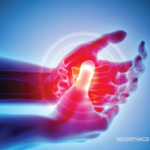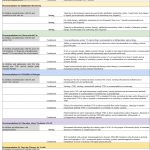Benefits & Drawbacks
One of the huge advantages of the GRADE methodology is the high degree of transparency it affords the diverse group of guideline developers—as well as to the eventual guideline users—about the evidence upon which a recommendation is based.
Explicitly including considerations about the benefits vs. harms of a treatment option and the values and preferences of patients and clinicians in the decision-making process also sets GRADE apart.
Of course, one disadvantage of employing such a rigorous methodology is that this process is simply not nimble. It takes almost two years from inception to final approval for publication to develop a set of ACR guidelines. Looking ahead, we hope to find ways to shorten this timeline without sacrificing quality.
Our ACR guidelines are strengthened by partnerships with other professional societies and patient groups, including the Arthritis Foundation, the National Psoriasis Foundation, the Spondylitis Association of America and the Spondyloarthritis Research and Treatment Network, which help us develop and later disseminate the final guideline product widely.
Guideline Publication
Right now, dissemination of ACR guidelines occurs primarily through journal publications and by posting the guidelines on the ACR website.4 We also make every effort to present guidelines from the podium during the ACR Annual Meeting, almost always to overflow audiences. This exuberant attendance speaks to the level of demand for guidelines from a trusted source.
In addition, convenient pocket cards for each new ACR guideline are developed. And most recently, the ACR has developed an app featuring several of our guidelines, with more to come. The ACR Guideline & Criteria App is free and easy to download on a smartphone from the Apple App Store or Google Play.
That all said, the greatest asset we have in the ACR’s guideline efforts is the people involved, our village of guideline developers. Who are these incredible people? They are our volunteer clinicians and researchers, as well as the patients, who work in strong partnership with our staff and others contracted to do this important work for our members. The thoughtfulness and care they bring to the process ensure that it is systematic in its execution and that the resulting product is credible and unbiased.
We have come to embrace guidelines not because we, in rheumatology, will ever abandon the art of medicine in the care of patients with rheumatic disease. Rather, guidelines allow us to more effectively manage the vast amount of science that has changed our field and incorporate into our practice with greater assurance and ease some of the most important advances to improve the care of our patients with rheumatic disease.



